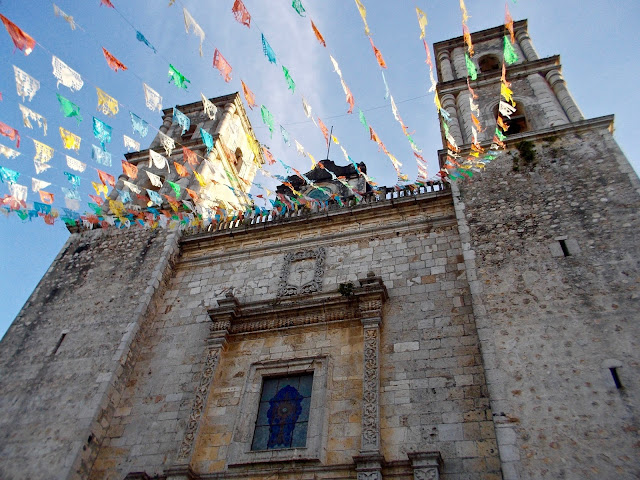Chichen Itza, a Unesco World Heritage site, is the most visited Mayan ruin in the Yucatan. We made the 45 km. journey there and back on the Oriente bus line from Valladolid. Getting there was fine, but we had a long wait for the bus back. The site is impressive, especially the imposing El Castillo pyramid.
From my photo, it looks as if the place is deserted, but in fact I just got lucky - there are hundreds of tourists milling about, partly because this is a day trip from Cancun with its hotels and cruise ships.
Another drawback is that all paths through the site are lined with eager vendors selling all kinds of items. Even though it does distract from the experience, it's worth remembering that this is a poor part of the country and these people have few other ways to make a living.
El Castillo is constructed of large unadorned stone blocks, but several of the surrounding structures have intricately carved details,
... including this wall of skulls.
Jaguars are a feature on the corners of several buildings.
I mentioned the popular Mayan game of pok-ta-pok in the previous post. The photo below shows the Chichen Itza playing field, the largest still in existence.
The game is played by two teams with a solid rubber ball a little smaller but much heavier than a soccer ball. Players cannot use hands and feet to touch the ball, only their torso, forearms and thighs. The goal is to be the first to punt the ball through a ring set high in one wall of the court (right side of photo), not at all an easy task, especially as the average height of a Mayan man was not much more than 5 feet.
In the demonstration that we saw in Valladolid, the ring was set on a stand in the plaza that was about shoulder height to the players. Even at that easier level, players had a hard time scoring a goal. (A video is available here.)


















